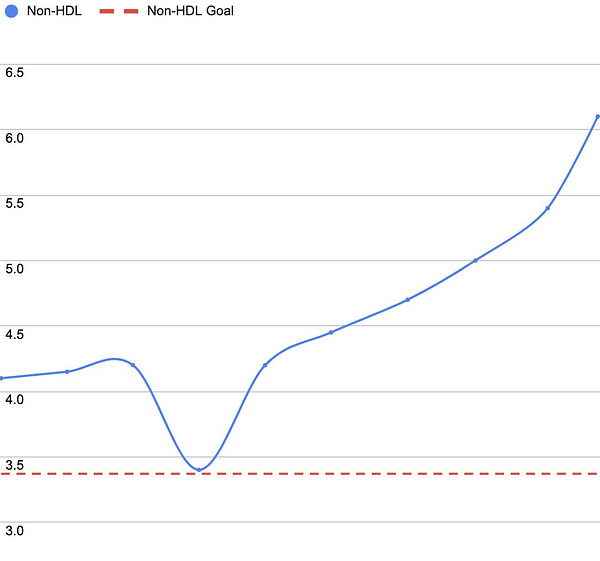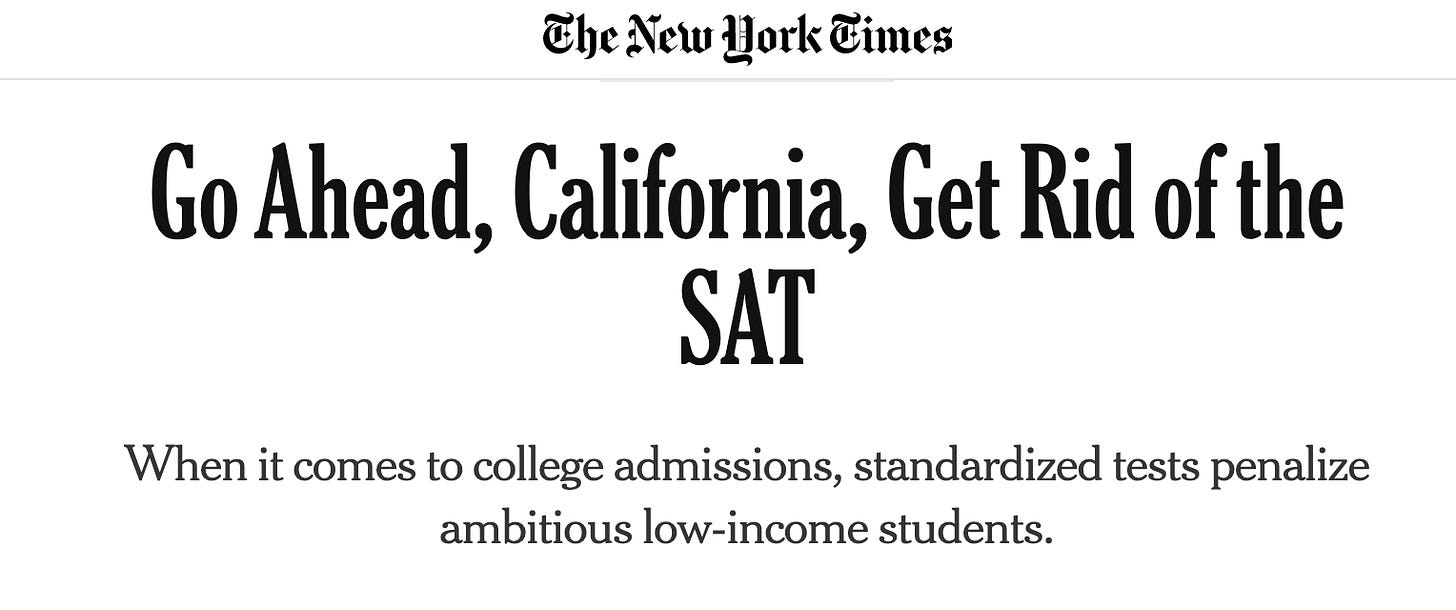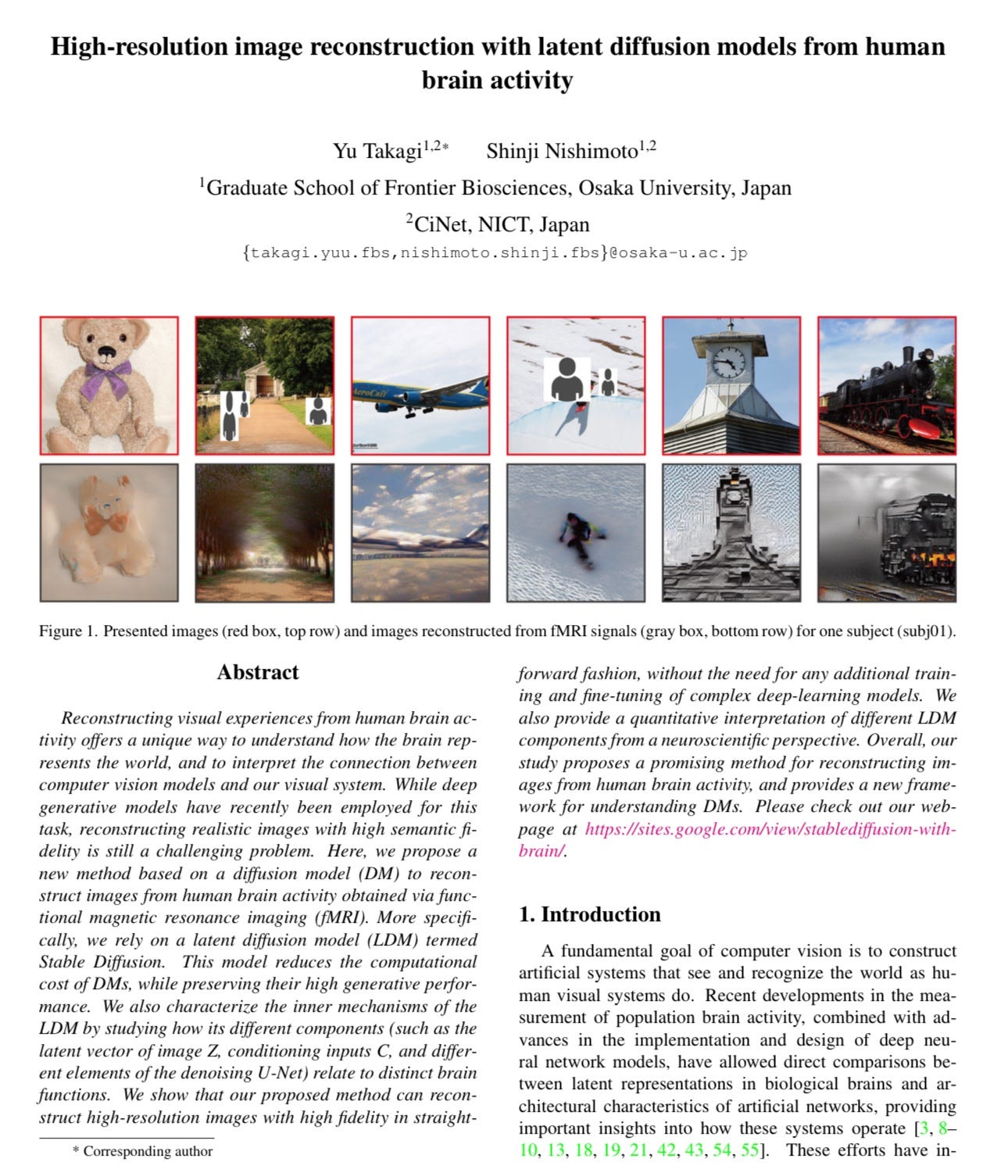The Long Game 145: A Cholesterol Self-Experimentation, Material Things, Luck, Duolingo
🤖 Why AI Won't Cause Unemployment, Religion, Community, & Meaning, Jailhouse Strong, Leanness, BRICS, and Much More!
Hi there, it’s Mehdi Yacoubi, co-founder at Vital, and this is The Long Game Newsletter. To receive it in your inbox each week, subscribe here:
In this episode, we explore:
A cholesterol self-experimentation
Material things
Luck
Duolingo
Let’s dive in!
🥑 Health
📊 A Cholesterol Self-Experimentation
I found this self-experimentation by Paul Murphy very interesting and worth sharing. I see a future where those self-experimentations are easily shareable on Vital and where people can easily enroll themselves in a similar experiment and find what works for them.


🌱 Wellness
🛍 Material Things
Over the last ten years, minimalism became very popular, both the philosophy of life and its aesthetics. I think we’re slowly getting out of this trend—for the better.
This tweet perfectly encapsulates something I’ve been feeling: there’s a lot of happiness to be found in material things.
These things will be deeply personal, but here’s an example of what I can think of:
good/ local food
good looking/ practical furniture
an excellent work set-up (furniture, lighting, fast laptop)
good lifting tools & clothes
beautiful coffee table books
a great coffee machine

🧠 Better Thinking
🎰 The Luckier You Are, The Nicer You Should Be
This piece powerfully resonated with me as I’ve thought a lot about luck in the last two months and the beginning of fatherhood. The importance of luck became more apparent to me lately—not at the expense of discarding hard work, though—but just realizing no matter what you do, things don’t always play out in a great way.
An important skill – an incredibly hard one – is identifying when things in your life are temporarily too good, and preparing for the inevitable adjustment.
It’s so difficult, because most people’s willingness to put up with hard times relies on the idea that you’ll eventually be rewarded with good times. When good times come, you feel like you earned it, and nothing is easier to justify than deserved reward.
But there’s an irony here.
When most people experience bad times they consider it risk – the idea that a force outside of their control influenced outcomes more than anything they did intentionally.
Rarely is that logic turned around.
Because what’s the opposite of risk? Luck. And what is luck? The idea that a force outside of their control influenced outcomes more than anything they did intentionally.
It’s the same thing as risk, just in the other direction.
Nothing too good or too bad stays that way forever, because great times plant the seeds of their own destruction through complacency and leverage, and bad times plant the seeds of their own turnaround through opportunity and panic-driven problem-solving.
Everything is cyclical. But the way we deal with risk vs. luck couldn’t be further apart. One is instantly recognized and we can’t wait until it’s over, the other causes instant denial that it might ever end.
It happens in investing, where every decline has to be explained and blamed on someone else, but every increase is usually accepted and attributed to your own intelligence.
It happens in business – so many big tech companies are laying off workers because they assumed the Covid-19 business bump would remain permanent.
It happens in careers, where everything from cheap money to macro tailwinds can shift the gap between how much you earn and how much value you produce.
It’s been like that forever, and always will be. People are much more attuned to negative anomalies than positive ones, especially for things that impact their own lives. It’s such a hard thing to manage.
And there are no easy answers on how to manage it. There are so many things in life where distinguishing between sustainable momentum and temporary luck is only known with hindsight.
Maybe the broadest way to protect yourself is the simple rule that the luckier you are, the nicer you should be.
⚡️ Startup Stuff
🦉 How Duolingo reignited user growth
I’m a big fan of Duolingo as a product, not so much as a user; I don’t use it, but as a big inspiration for what we’re building at Vital. I enjoyed this piece about how they reignited their user growth.
The streak vector
In the search for even more growth vectors, the APM on the Retention Team started exploring whether there was a strong correlation between retention and usage of particular Duolingo features. He discovered that if a user reached a 10-day streak, their chances of dropping off were reduced substantially. Clearly, a lot of this was simply correlation and selection bias, but we felt the insight was interesting enough to start investing in improving this feature again.
The concept of a streak is really quite simple: show users the number of consecutive days they’ve done any activity on the app. But it turns out that there is a surprisingly large number of optimization opportunities around streaks.
We got our first big win with the streak-saver notification—a notification that alerts users with streaks if they are about to lose their streak. This late-night notification proved that indeed there was considerable upside to doubling down on streak optimizations. After this, several improvements followed: calendar views, animations, changes to streak freezes, and streak rewards, among others. Each helped improve upon the original streak idea and generated substantial improvements to retention.
To date, the streak feature is one of Duolingo’s most powerful engagement mechanics. When people talk about their Duolingo experience, they often bring up their streak. I recently met one user who told me, “I have a 1,435-day streak!” and added, “with no streak freezes!” His bragging rights were well-earned, as he had been studying his chosen language daily for almost four years.
Streaks work for a number of reasons. One of those is that a streak increases user motivation over time; the longer the streak is, the greater the impetus to keep the streak going. When it comes to user retention, this is the exact behavior we want in our users. Each day that a learner comes to Duolingo, they care a bit more about coming back the next day than they did the day before, hence increasing retention and DAU. As a meta-lesson, our success with the streak mechanic further showed us that we could squeeze major wins from existing features. We could see the value in both big breakthroughs and in fast optimizations. And an A+ team often has a mix of both.
Want to build up your Proof-of-Health Streak on top of your language streak? Join us on Vital!
📚 What I Read
🦾 Jailhouse Strong
An excellent book for everything related to at-home/no-equipment training methods. I still prefer to go to the gym, to be honest, but with a kid, it’s sometimes harder to manage time. So I like to sprinkle in some home workouts when I can’t leave home—pretty intense stuff in the book.
Tired of all the latest exercise “advancements” delivering no results? For less than the cost of a day pass to any trendy chain gym, you can get Jailhouse Strong. With innovation and dedication prisoners make incredible strength gains. Jailhouse Strong offers functional strength training with a workout system that is based on the training habits cultivated behind bars. Through interviews with personalities ranging from a former Mr. Olympia, who started lifting behind bars, to a co-founder of the Crips Street gang, Jailhouse Strong describes the workouts prisoners use to become lean and powerful. Jailhouse Strong includes programs for lifting, bodyweight movements, and conditioning with unarmed combat techniques. The workouts require minimal cost, equipment, time, and space and they can be done at home, in a hotel, or just about anywhere. Whether you are doing 10–25 or working 9-5, Jailhouse Strong can fit into your schedule because Jailhouse Strong provides the fitness habits that are crucial for getting strong and for maintaining a level of emotional balance amidst the volatile reality found on both sides of prison walls.

🔮 Reflections on Religion, Community, & Meaning
Reflections on the state of religion, community, and meaning in modern America.
Modern American Culture Today
There are lots of folks smarter than me that have grand pontifications on the state of culture.
I don’t have a grand theory of everything. All I have are some observations.
A lot of folks are struggling. They’re anxious.
The CDC recently released a study stating that sadness and hopelessness are at all-time highs. Suicide rates are up 60% amongst Gen-Z.
To many, our country feels increasingly divided by culture wars and politics.
Amongst my peers, I’d wager that many of them are quietly battling or have recently battled their own fights against anxiety, depression, and the like.
Social media proliferation and pandemic lockdowns have exacerbated many of these feelings.
We are connected to everyone and no one at the same time.
These all help explain why a religious revival briefly struck a cultural zeitgeist in an increasingly secular society.
The Asbury revival went viral because people around this country are seeking. Seeking something that they feel is missing from their day-to-day lives.
Religion used to provide the answers to the big life questions for many people.
Christianity and other religions offer something that speak to fundamental human needs. That’s why they’ve outlasted empires, nation-states, and nearly every other institution.
These human needs don’t just disappear because we live in a “post-religious” society.
🤖 Why AI Won't Cause Unemployment
"In retrospect, I wish I had known more about the hazards and difficulties of [running] a business." -- George McGovern
Now we’re heading into the third such panic of the new century with AI, coupled with a continuous drumbeat of demand for Communist-inspired Universal Basic Income. “This time is different; AI is different,” they say, but is it?
Normally I would make the standard arguments against technologically-driven unemployment — see good summaries by Henry Hazlitt (chapter 7) and Frédéric Bastiat (his metaphor directly relevant to AI). And I will come back and make those arguments soon. But I don’t even think the standand arguments are needed, since another problem will block the progress of AI across most of the economy first.
Which is: AI is already illegal for most of the economy, and will be for virtually all of the economy.
How do I know that? Because technology is already illegal in most of the economy, and that is becoming steadily more true over time.
How do I know that? Because:
This chart shows price changes, adjusted for inflation, across a dozen major sectors of the economy.
As you can see, we actually live in two different economies.
The lines in blue are the sectors where technological innovation is allowed to push down prices while increasing quality. The lines in red are the sectors where technological innovation is not permitted to push down prices; in fact, the prices of education, health care, and housing as well as anything provided or controlled by the government are going to the moon, even as those sectors are technologically stagnant.
We are heading into a world where a flat screen TV that covers your entire wall costs $100, and a four year college degree costs $1 million, and nobody has anything even resembling a proposal on how to systemically fix this.
👛 Dropping the SAT Requirement Is a Luxury Belief
Disguising self-interest as virtue.
Columbia University, has just become the first Ivy League school to permanently abandon the SAT/ACT requirement for college admission.
Elite colleges are eliminating standardized tests before they eliminate legacy admissions. Tells you all you need to know.
The reasoning, according to Columbia’s announcement, is “to best determine an applicant’s suitability for admission and ability to thrive in our curriculum and our community, and to advance access to our educational opportunities.”
The ability to effortlessly produce buzzwords and gibberish and euphemisms has become a precondition for advancement in our institutions of higher learning. Which is how ambitious mediocrities have gained control.
I know it’s supposedly “test optional.” But this contributes to a situation in which testing is downgraded and other application materials take on even more importance.
Here’s a headline in the NYT:
The writer claims standardized tests penalize poor kids who get good grades. He calls it a “barrier.”
I rarely see discussions about the reverse situations. There are poor kids who get bad grades but find a path upward because of standardized testing.
A 2016 study found that implementing a standardized testing requirement increased the number of poor and nonwhite kids in gifted programs. In other words, an IQ test administered to all students revealed that previously overlooked students from disadvantaged backgrounds qualified as academically gifted.
Similarly, a British study found that when relying on their own impressions, teachers tended to view a kid from a low-income background as less academically competent even when they had the same test score as a rich kid. The objectivity of scores can serve as a useful corrective to the subjective nature of teacher evaluations.
🍭 Brain Food
🤯 High-resolution image reconstruction with latent diffusion models from human brain activity
This paper is wild. It seems that AI can now reconstruct visual images from MRI scan data using Stable Diffusion. The first row is the image presented to the test subject, and the second row is the reconstructed image from MRI data. This is getting very close to reading our minds.
Reconstructing visual experiences from human brain activity offers a unique way to understand how the brain represents the world, and to interpret the connection between computer vision models and our visual system.
While deep generative models have recently been employed for this task, reconstructing realistic images with high semantic fidelity is still a challenging problem.
Here, we propose a new method based on a diffusion model (DM) to reconstruct images from human brain activity obtained via functional magnetic resonance imaging (fMRI). More specifically, we rely on a latent diffusion model (LDM) termed Stable Diffusion. This model reduces the computational cost of DMs, while preserving their high generative performance.
We also characterize the inner mechanisms of the LDM by studying how its different components (such as the latent vector of image Z, conditioning inputs C, and different elements of the denoising U-Net) relate to distinct brain functions.
We show that our proposed method can reconstruct high-resolution images with high fidelity in straightforward fashion, without the need for any additional training and fine-tuning of complex deep-learning models.
We also provide a quantitative interpretation of different LDM components from a neuroscientific perspective.
Overall, our study proposes a promising method for reconstructing images from human brain activity, and provides a new framework for understanding DMs.
Please check out our webpage here.
🎥 What I’m Watching
📉 ATHLEAN-X: "6% Body Fat is Ideal For Men" ...um...WHAT?
Athlean-X is one of the worst fitness YouTubers out there, in my opinion. He led countless natural lifters in the direction of trying to remain too lean all the time, thus staying small and with minimal progress. This video explains the issue with this.
🏳 Why the BRICS Failed?
🔧 The Tool of the Week
✨ A Pull-Up Bar at Home
In the last few days, I was reminded of how good it is to have a pull-up bar at home. Add some push-ups, and you get an elite upper-body workout without leaving home and in minimal time.
🪐 Quote I’m Pondering
The world is a very malleable place. If you know what you want, and you go for it with maximum energy and drive and passion, the world will often reconfigure itself around you much more quickly and easily than you would think.
— Marc Andreessen
👋 EndNote
Thanks for reading!
If you like The Long Game, please share it on social media or forward this email to someone who might enjoy it. You can also “like” this newsletter by clicking the ❤️ just below, which helps me get visibility on Substack.
Until next week,
Mehdi Yacoubi







As I get (more) mature [I'm still learning], I'm more able to see which material purchases matter to me.
A good computer I can rely on, A new fitness tracker, A good pair of hiking boots. These are purchases that have actually improved my quality of life.
Like all things, they are tools and they are neutral- it's all in the relationship I bring to them.